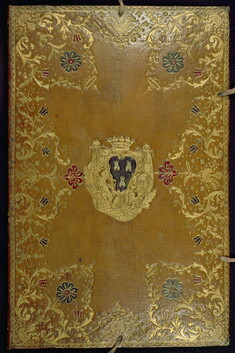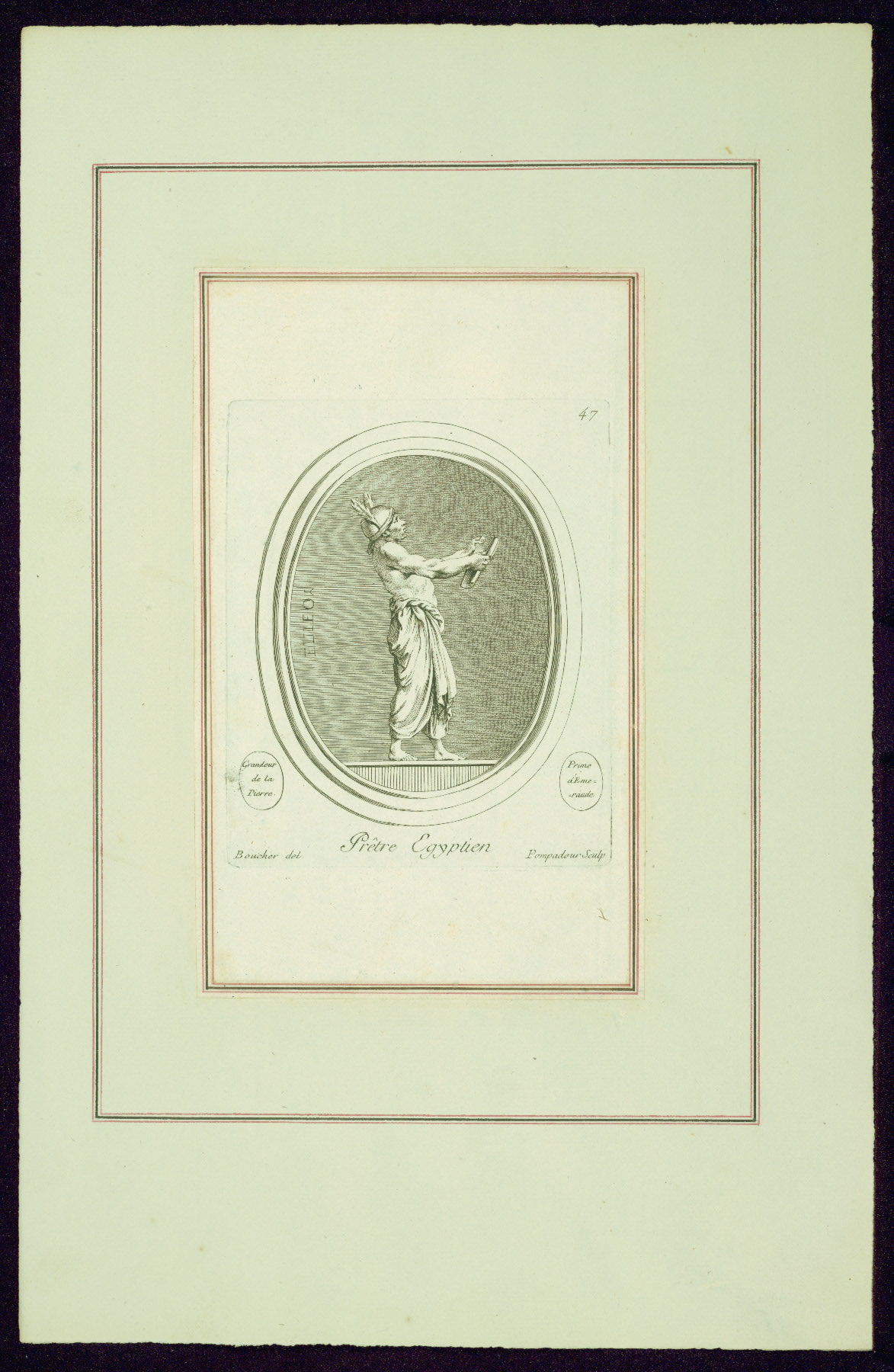Egyptian Priest, from Madame de Pompadour's "Suite of Prints"
The intaglio depicted here was carved by Guay during a visit to Rome. The priestly figure comes from a relief at the Vatican, but the Greek inscription, which is actually meaningless, was invented by Guay to make the gem look like an antique. The re-imagination of the carved stone in the medium of etching inflates the figure’s muscles and loosens the folds of his robe, infusing him with life. The velvety handling of the print contrasts with the austere lines of the carved gemstone.
Provenance
Provenance (from the French provenir, 'to come from/forth') is the chronology of the ownership, custody, or location of a historical object. Learn more about provenance at the Walters.
Jeanne Antoinette Poisson, Marquise de Pompadour, ca. 1755. Purchased by Henry Walters, Baltimore, 1895; by bequest to Walters Art Museum, 1931.
Exhibitions
| 2016 | Madame de Pompadour, Patron and Printmaker. The Walters Art Museum, Baltimore. |
Geographies
France, Paris (Place of Origin)
Measurements
Folio H: 14 9/16 × W: 9 3/8 in. (37 × 23.8 cm)
Credit Line
Acquired by Henry Walters, 1895
Location in Museum
Not on view
Accession Number
In libraries, galleries, museums, and archives, an accession number is a unique identifier assigned to each object in the collection.
In libraries, galleries, museums, and archives, an accession number is a unique identifier assigned to each object in the collection.
92.548.53
Do you have additional information?
Parent Object



